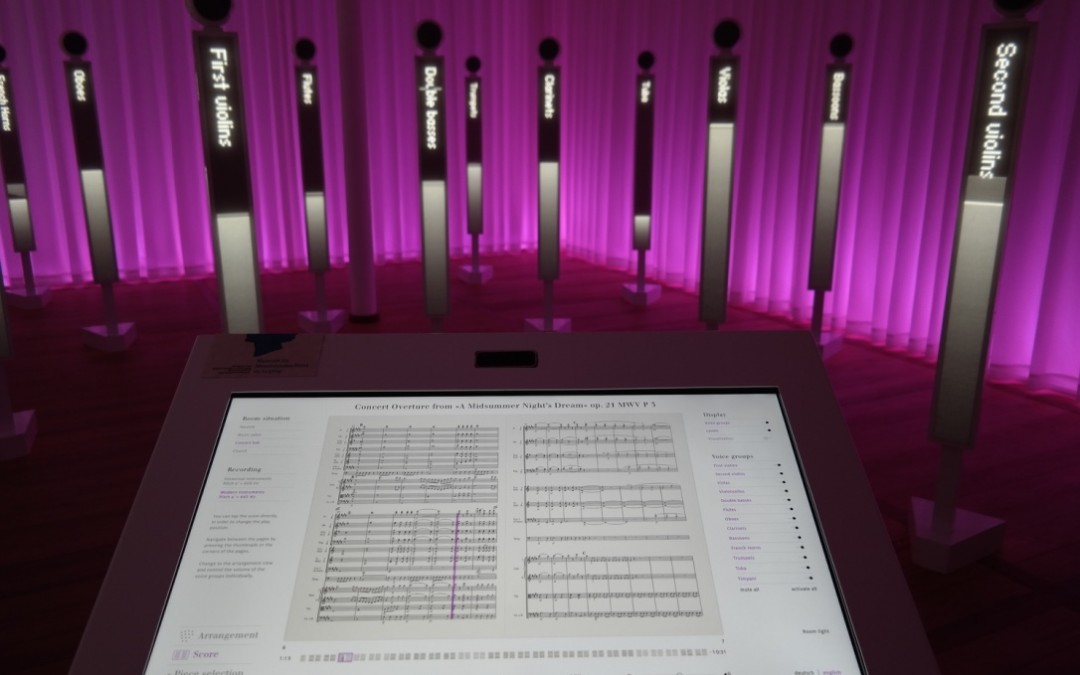by Steven Wang
Baroque composer Johann Sebastian Bach, who lived in Leipzig, Germany for 27 years and died there, has become the calling card for the city.
But 2 kilometers southeast of the Bach Museum and St Thomas Church, where Bach worked, is an inconspicuous three-storey house dedicated to another musician: prodigy Felix Mendelssohn.

Christiane Schmidt, Concert Department Director of the Mendelssohn House, says the composer is responsible for Leipzig’s reputation as a music city.
“Without Mendelssohn, Leipzig wouldn’t be the music city it is now,” says Christiane Schmidt, the Concert Department Director of the Mendelssohn House. “Mendelssohn brought Bach’s music back to us.”
Bach’s music was frequently played during services in local churches after the composer’s death in 1750 without attendants knowing who composed it, Schmidt says. But it was Mendelssohn who revived the name Bach and brought his music to concert halls.
The 20-year-old Mendelssohn conducted Bach’s St Matthew Passion in Berlin in 1829. This was the first time Bach’s work had been successfully performed to the public for 100 years.
Despite international acknowledgement, Mendelssohn was criticized during his time for being too old-fashioned and also conservative. Mendelssohn’s contemporaries — Richard Wagner, Franz Liszt and Hector Berlioz— were far more aggressive in departure from the tradition set up by predecessors such as Bach.
But for residents of Leipzig, Mendelssohn’s contribution to the city is indelible, Schmidt says.
Mendelssohn developed the modern symphonic orchestra system when he was conductor of the Leipzig Gewandhaus Orchestra, now a world-class orchestra, and founded the first musical school in Germany: the Leipzig Conservatory.
According to the Mendelssohn biography by Peter J Mercer-Taylor, a music history scholar from the University of Minnesota, Mendelssohn tried hard to persuade the then king of Saxony to have the conservatory based in Leipzig instead of the capital city Dresden.
Mendelssohn seemed to have a partiality for Leipzig. He declined the offer of a more prominent position in Munich and was reluctant to perform his duty in Berlin assigned by the Prussian king, according to Mercer-Taylor.
In his diary, Mendelssohn wrote that people in Berlin worked for themselves, while people in Leipzig worked for the country. The open-minded bourgeoisie culture in Leipzig at that time attracted Mendelssohn a lot, Schmidt says.
A monument to Mendelssohn, erected after his early death, was removed by the Nazi forces in 1936 and his works were banned from performance and publication because of the composer’s Jewish origins.
During the time of the German Democratic Republic, the government promoted German classical music partly as a counterforce to the rising street culture. With its rich musical heritage, Leipzig was treated as an important base for the campaign.
Later, in 1989, the then conductor of the Leipzig Gewandhaus Orchestra, Kurt Masur, launched citizen meetings in the concert hall as part of the negotiation with the communist government. The ensuing demonstrations in Leipzig played a remarkable role in the reunification of Germany.
Nowadays the Mendelssohn House is the only museum solely dedicated to the composer. The building, located in a quiet neighbourhood just beside the new Gewandhaus concert hall, was the home of the Mendelssohn family.
Compared to the Bach Museum, the Mendelssohn House is smaller and less visited by tourists. “Mendelssohn might be not as famous as Bach, but his music is no less great,” says Jochen Jacobi, a university student from Hamburg. Jacobi visited the museum for a school assignment.

The Mendelssohn House holds regular concerts of Mendelssohn’s music as well as by other composers, such as Mozart and Beethoven.
Concerts featuring Mendelssohn’s music are held regularly in the house. Some people unable attend the special concert on Christmas Eve, Schmidt says.
Some attendants weep in sorrow during the concert, Schmidt adds. “But after they listen to the music for a while, you can see that they are smiling.”
The monument to Mendelssohn was reconstructed in 2008. Now it stands outside the St Thomas Church where Bach once composed hundreds of cantatas and masses. Visitors coming to worship Bach pass by the statue of the man who rescued Bach from being lost to history.
See a photo slideshow of the Mendelssohn House here.
